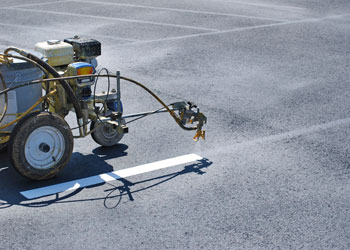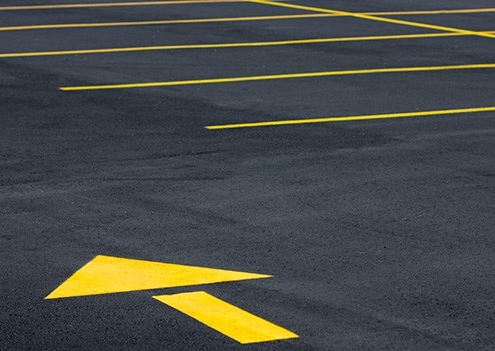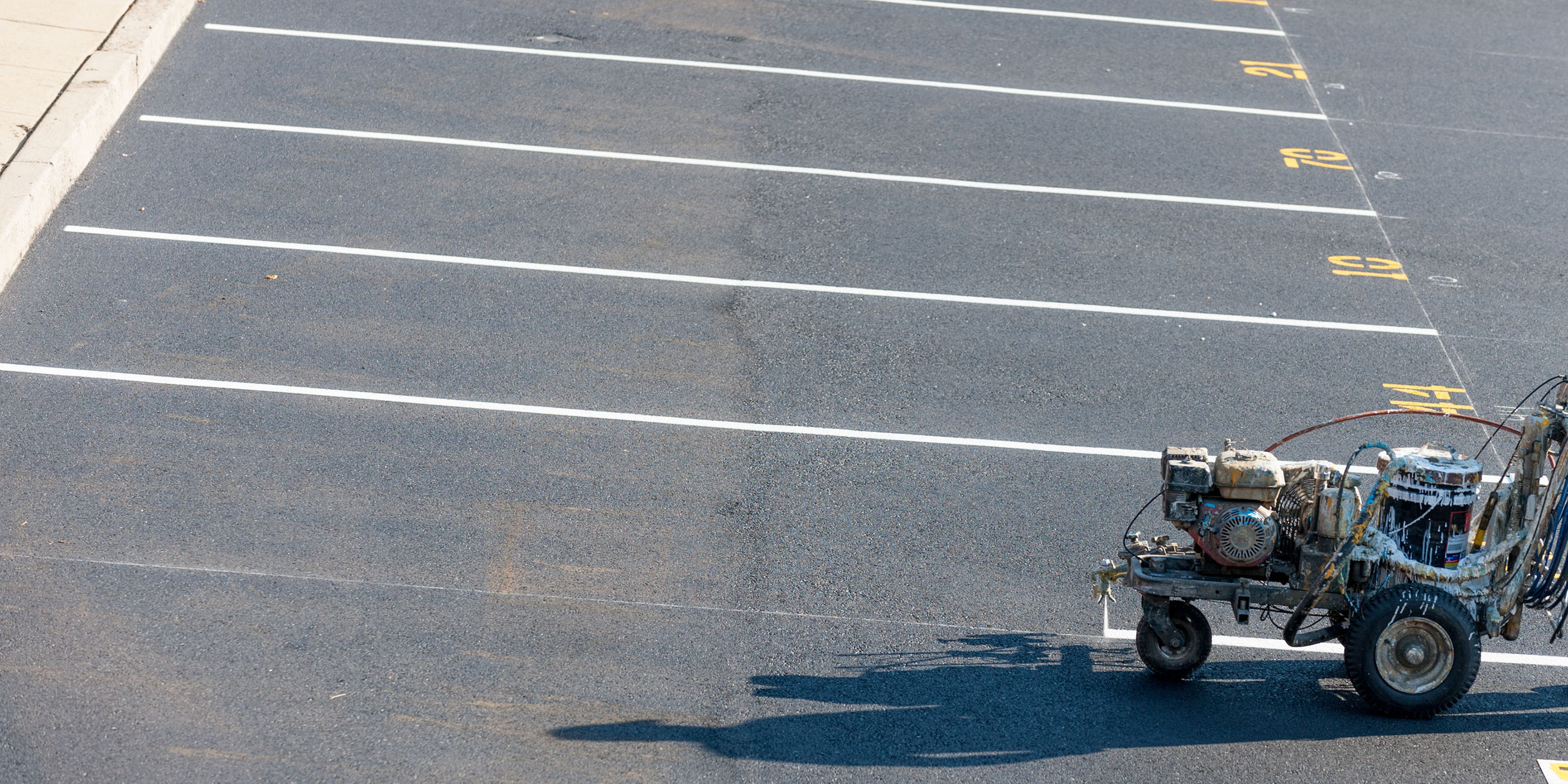A Comprehensive Overview to the most effective Practices in Road Paint for Public Highways
Reliable roadway painting is a critical element in guaranteeing public safety and security and optimal website traffic flow on freeways. This conversation will discover the very best methods in this area, including the choice of appropriate materials and progressed application methods. It is necessary to think about not just the immediate effect of roadway markings yet likewise their lasting maintenance and visibility under varying ecological conditions. Understanding these factors can substantially affect the effectiveness of road markings, yet numerous are unaware of the subtleties involved. As we think about these finest techniques, the implications for mishap decrease and total road usability will come to be evident.
Significance of Road Painting
Roadway painting plays a vital duty in keeping web traffic security and effectiveness, with research studies showing that well-marked roads can minimize mishaps by up to 30%. The clear distinction of lanes, pedestrian crossings, and various other essential markings serves to assist drivers and pedestrians, fostering a predictable environment when traveling. This predictability is essential for reliable navigating and helps reduce confusion, which can frequently lead to crashes.
Furthermore, road markings contribute in conveying important details, such as speed limits and directional advice. They improve visibility, especially in damaging weather or throughout nighttime driving. The existence of reflective materials in roadway paints further improves presence, enabling drivers to determine crucial markings that affect their behavior on the roadway.

Choosing the Right Products
Selecting ideal materials for road paint is vital to achieving sturdy and effective markings. The selection of materials straight affects the exposure, long life, and safety and security of road markings. Common choices consist of water-based paints, solvent-based paints, and thermoplastic products, each with unique buildings and applications.
Water-based paints are environmentally friendly, quick-drying, and appropriate for the majority of weather condition problems, making them excellent for urban setups. However, they may call for more constant maintenance as a result of tear and use. Solvent-based paints, while using excellent bond and resilience, can present ecological and wellness concerns because of unstable organic substances (VOCs)
Polycarbonate products are significantly popular because of their durability and resilient performance. These materials are heated before application, enabling for a solid bond with the sidewalk. Their reflective properties improve exposure, particularly at evening.
When picking products, variables such as web traffic volume, climate conditions, and the particular type of road need to be thought about. Carrying out complete study and consulting with suppliers can aid make certain that the chosen products satisfy regional guidelines and requirements, eventually adding to much safer roads and enhanced motorist understanding.
Effective Application Techniques
Reliable application methods play an important role in making certain that road markings achieve optimum performance and long life. This method minimizes overspray and makes sure that the paint is used uniformly, which is important for maintaining road safety.
Prior to application, it is vital to prepare the surface sufficiently. This includes cleaning the roadway of dampness, particles, and oil Line painting company to boost bond. In addition, temperature and humidity need to be taken into consideration during the application process to accomplish the very best results.
Utilizing the suitable tools is also vital. Line stripers equipped with adjustable widths permit for accurate markings that satisfy regulatory requirements. In addition, it is important to calibrate the devices frequently to make certain consistency in paint thickness.
Timing and Ecological Variables
Appropriate timing and consideration of ecological elements are important for the effective application of roadway markings. The performance of roadway paint mainly depends on temperature, humidity, and wind problems at the time of application.
Humidity levels also play a crucial function; high humidity can prevent drying times, while exceedingly dry problems may create quick evaporation of solvents, influencing the paint's performance. Wind can introduce impurities and debris, potentially endangering the high quality of the markings. Therefore, it is a good idea to choose calm days for application.

Furthermore, taking into consideration seasonal variants is critical. For circumstances, roadway paint during damp periods may lead to washouts, while severe heat can create paint to blister. Setting up paint projects throughout positive weather can substantially enhance the long life and efficiency of roadway markings. By meticulously reviewing these variables, companies can ensure that roadway markings are applied effectively and maintain their presence and toughness gradually.
Maintenance and Longevity Methods

One reliable strategy is to carry out a systematic painting program based upon web traffic volume and ecological variables - Line painting company. Higher web traffic locations might need more constant maintenance to counteract the abrasive impacts of lorries and climate condition. Furthermore, making use of long lasting materials, such as thermoplastic and epoxy paints, can significantly prolong the life-span of road markings
Cleaning up roadway surface areas to remove particles and contaminants is one more crucial facet of maintenance. This makes sure optimum bond of brand-new paint and boosts the overall effectiveness of the markings. Moreover, using innovative innovations, such as computerized radar, can improve the tracking procedure and maximize maintenance routines.
Incorporating these strategies will not only improve the visibility and safety of road markings however likewise decrease long-lasting costs related to frequent repainting and repair work. (Line painting company)
Final Thought
View see here now Line painting Abbotsford in a full screen map
In summary, executing best practices in roadway paint is essential for enhancing safety and performance on public browse around this site freeways. The choice of appropriate products, integrated with reliable application strategies and consideration of environmental variables, adds to the toughness and exposure of road markings. Normal maintenance and evaluations better extend the life-span of these markings, eventually decreasing accidents and boosting general road use. Abiding by these standards cultivates more secure driving conditions and assists in smoother web traffic flow.
The presence of reflective materials in roadway paints further enhances presence, allowing drivers to determine critical markings that influence their actions on the roadway.
Selecting proper products for road painting is essential to achieving effective and long lasting markings.While the preliminary application of roadway markings is important, continuous upkeep strategies are equally crucial to guarantee their durability and presence. Additionally, the use of long lasting products, such as polycarbonate and epoxy paints, can significantly extend the life expectancy of roadway markings.
The selection of suitable materials, integrated with efficient application methods and factor to consider of ecological elements, contributes to the toughness and presence of roadway markings.